Design Implementation of Trapezoidal Notch Band Monopole Antenna for LTE, ISM, Wi-MAX and WLAN Communication Applications †
Abstract
:1. Introduction
1.1. Benefits of Incorporating Notch Structure
1.2. The Antenna’s Frequency
2. Results and Analysis
The Peak Realized Gains at Different Frequencies
3. Conclusions
Author Contributions
Funding
Institutional Review Board Statement
Informed Consent Statement
Data Availability Statement
Acknowledgments
Conflicts of Interest
References
- Mohan Reddy, S.S.; Mallikarjuna Rao, P.; Madhav, B.T. Asymmetric defected ground structured monopole antenna for Wideband Communication Systems. Int. J. Commun. Antenna Propag. 2015, 5, 256–267. [Google Scholar] [CrossRef]
- Usman, M. Design of compact ultra-wideband monopole semi-circular patch antenna for 5G Wireless Communication Networks. Przegląd Elektrotechniczny 2019, 1, 225–228. [Google Scholar] [CrossRef]
- Nagre, S.S.; Shirsat, A.S. Design of compact CPW-fed printed monopole UWB antenna for band notched applications. In Proceedings of the 2016 International Conference on Automatic Control and Dynamic Optimization Techniques (ICACDOT), Pune, India, 9–10 September 2016. [Google Scholar]
- Rao, M.V.; Ramya, U.; Lakshman, P.; Prabhakar, V.S.V.; Madhav, B.T.P. Triple notch slotted monopole antenna with complementary split ring resonators. Int. J. Comput. Aided Eng. Technol. 2021, 15, 458–469. [Google Scholar] [CrossRef]
- Lu, G.; Yan, F.; Zhang, K.; Zhao, Y.; Zhang, L.; Shang, Z.; Diao, C.; Zhou, X. A dual-band high-gain subwavelength cavity antenna with artificial magnetic conductor metamaterial microstructures. Micromachines 2021, 13, 58. [Google Scholar] [CrossRef] [PubMed]
- Maji, A.; Choubey, G. Improvement of heat transfer through fins: A brief review of recent developments. Heat Transfer 2020, 49, 1658–1685. [Google Scholar] [CrossRef]
- Nejdi, I.H.; Das, S.; Rhazi, Y.; Madhav, B.T.; Bri, S.; Aitlafkih, M. A compact planar multi-resonant multi-broadband fractal monopole antenna for Wi-Fi, WLAN, Wi-Max, Bluetooth, LTE, S, C, and X band Wireless Communication Systems. J. Circuits Syst. Comput. 2022, 31, 225–237. [Google Scholar] [CrossRef]
- Al-Tamimi, M.; Mahdi, S. Design of double notch band half-elliptical shape reconfigurable antenna for UWB applications. Eng. Technol. J. 2019, 37, 85–89. [Google Scholar] [CrossRef]
- Yan, Y.; Li, L.; Zhang, J.; Hu, H.; Zhu, Y.; Chen, H.; Fang, Q. Design of Y-type branch broadband dual-polarization antenna and C-type slot line notch antenna. Prog. Electromagn. Res. M 2021, 106, 105–115. [Google Scholar] [CrossRef]
- Babu, K.V.; Das, S.; Ali, S.S.; El Ghzaoui, M.; Madhav, B.T.; Patel, S.K. Broadband sub-6 GHz flower-shaped MIMO antenna with high isolation using theory of characteristic mode analysis (TCMA) for 5G NR bands and Wlan Applications. Int. J. Commun. Syst. 2023, 36, 387–398. [Google Scholar] [CrossRef]
- Prasad, N.; Pardhasaradhi, P.; Madhav, B.T.; Das, S.; Awan, W.A.; Hussain, N. Flexible metamaterial-based frequency selective surface with square and circular split ring resonators combinations for X-band applications. Mathematics 2023, 11, 800. [Google Scholar] [CrossRef]
- Raghavendra, C.; Neelaveni Ammal, M.; Madhav, B.T.P. Metamaterial inspired square gap defected ground structured wideband dielectric resonator antenna for microwave applications. Heliyon 2023, 9, 210–221. [Google Scholar] [CrossRef] [PubMed]
- Sarma, C.A.; Inthiyaz, S.; Madhav, B.T. Design and assessment of bio-inspired antennas for Mobile Communication Systems. Int. J. Electr. Electron. Res. 2023, 11, 176–184. [Google Scholar] [CrossRef]
- Lanka, M.D.; Chalasani, S. Development of low profile M-shaped monopole antenna for Sub 6 GHz bluetooth, LTE, ISM, Wi-Fi and WLAN applications. Int. J. Intell. Eng. Syst. 2021, 14, 159–167. [Google Scholar]
- Kesana, S.; Srinivasa Babu, P.S.; Shameem, S. Design of quad-band antenna of 3.8 GHz range for Wi-Max Applications. In Proceedings of the 2021 IEEE International Conference on Mobile Networks and Wireless Communications (ICMNWC), Tumkur, India, 3–4 December 2021. [Google Scholar]
- Singh, G.; Singh, U. Triple-step feed line-based compact ultra-wideband antenna with quadruple band-notch characteristics. Int. J. Electron. 2022, 109, 271–292. [Google Scholar] [CrossRef]
- Rizvi Jarchavi, S.M.; Iqbal, M.; Dalarsson, M.; Alibakhshikenari, M.; Dayoub, I. Compact multi-band flexible antenna for ISM, WLAN, Wi-Fi, and 5G sub-6-ghz applications. In Proceedings of the 2022 3rd URSI Atlantic and Asia Pacific Radio Science Meeting (AT-AP-RASC), Gran Canaria, Spain, 30 May–4 June 2022. [Google Scholar]
- Saikumar, K.; Arulanantham, D.; Rajalakshmi, R.; Prabu, R.T.; Kumar, P.S.; Vani, K.S.; Ahammad, S.H.; Eid, M.M.; Rashed, A.N.; Hossain, M.A.; et al. Design and development of surface plasmon polariton resonance four-element triple-band multi-input multioutput systems for LTE/5G applications. Plasmonics 2023, 18, 1949–1958. [Google Scholar] [CrossRef]
- Vasimalla, Y.; Pradhan, H.S.; Pandya, R.J.; Saikumar, K.; Anwer, T.M.; Rashed, A.N.; Hossain, M.A. Titanium dioxide-2d nanomaterial based on the surface plasmon resonance (SPR) biosensor performance signature for infected red cells detection. Plasmonics 2023, 18, 1725–1734. [Google Scholar] [CrossRef]
- Nallagonda, S.; Roy, S.D.; Kundu, S.; Ferrari, G.; Raheli, R. Censoring-based cooperative spectrum sensing with improved energy detectors and multiple antennas in fading channels. IEEE Trans. Aerosp. Electron. Syst. 2018, 54, 537–553. [Google Scholar] [CrossRef]
- Sandeep, D.R.; Madhav, B.T.; Das, S.; Hussain, N.; Islam, T.; Alathbah, M. Performance analysis of skin contact wearable textile antenna in human sweat environment. IEEE Access 2023, 11, 62039–62050. [Google Scholar] [CrossRef]

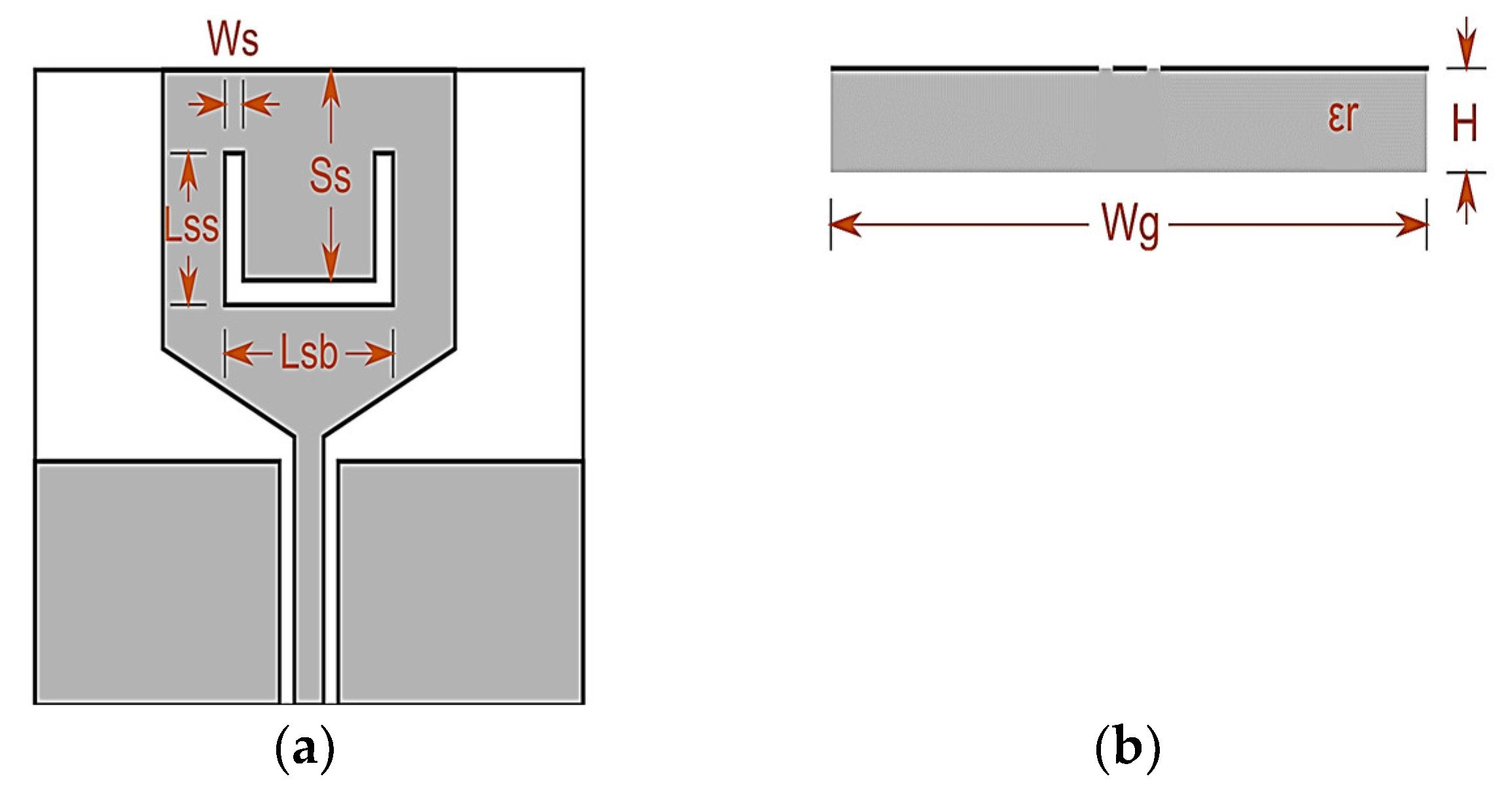
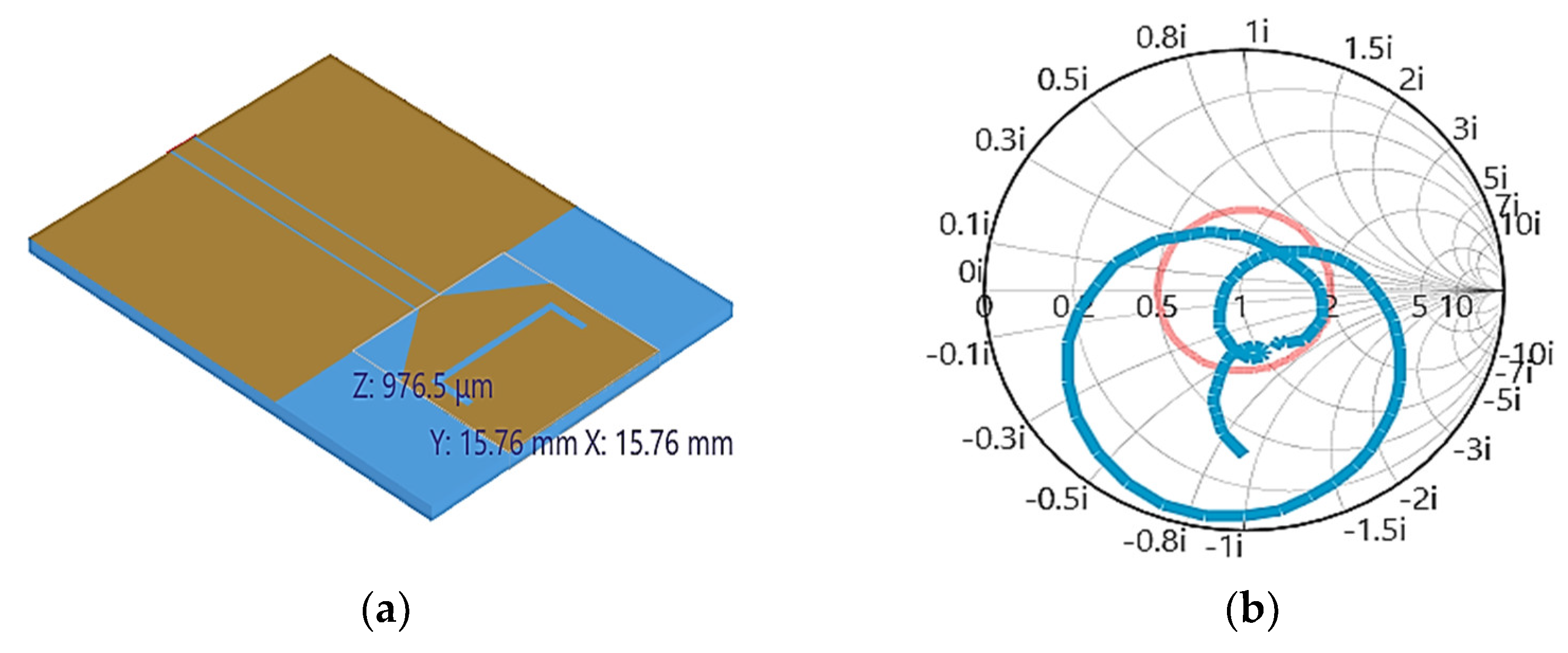

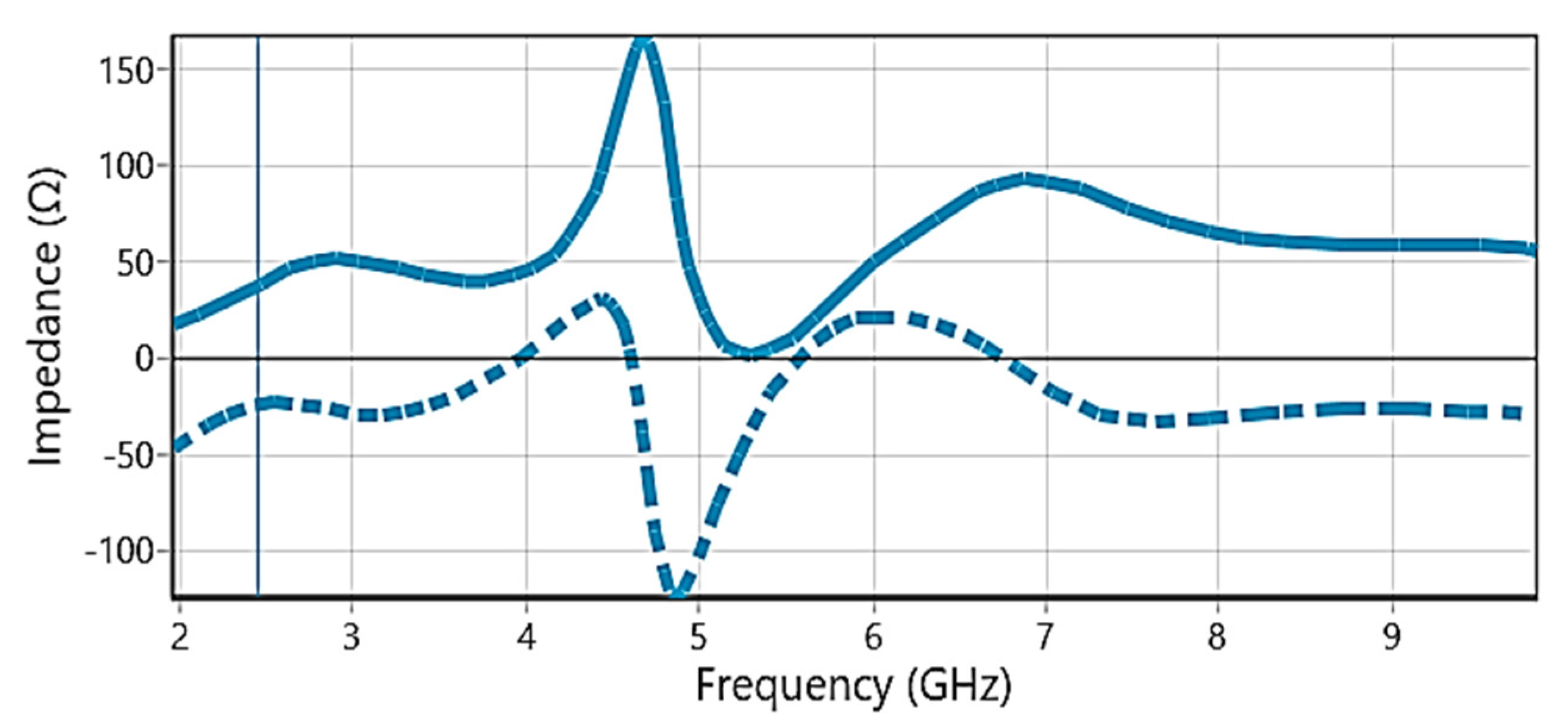
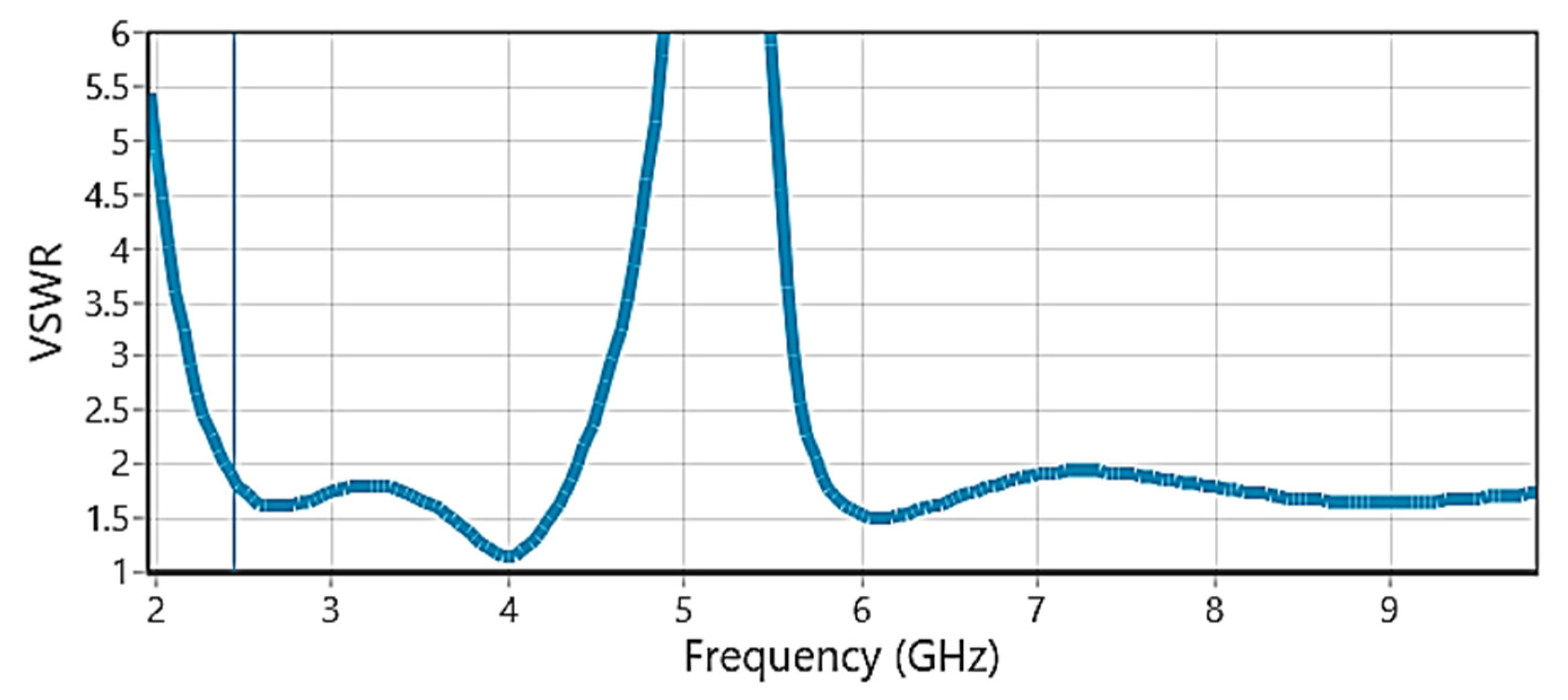
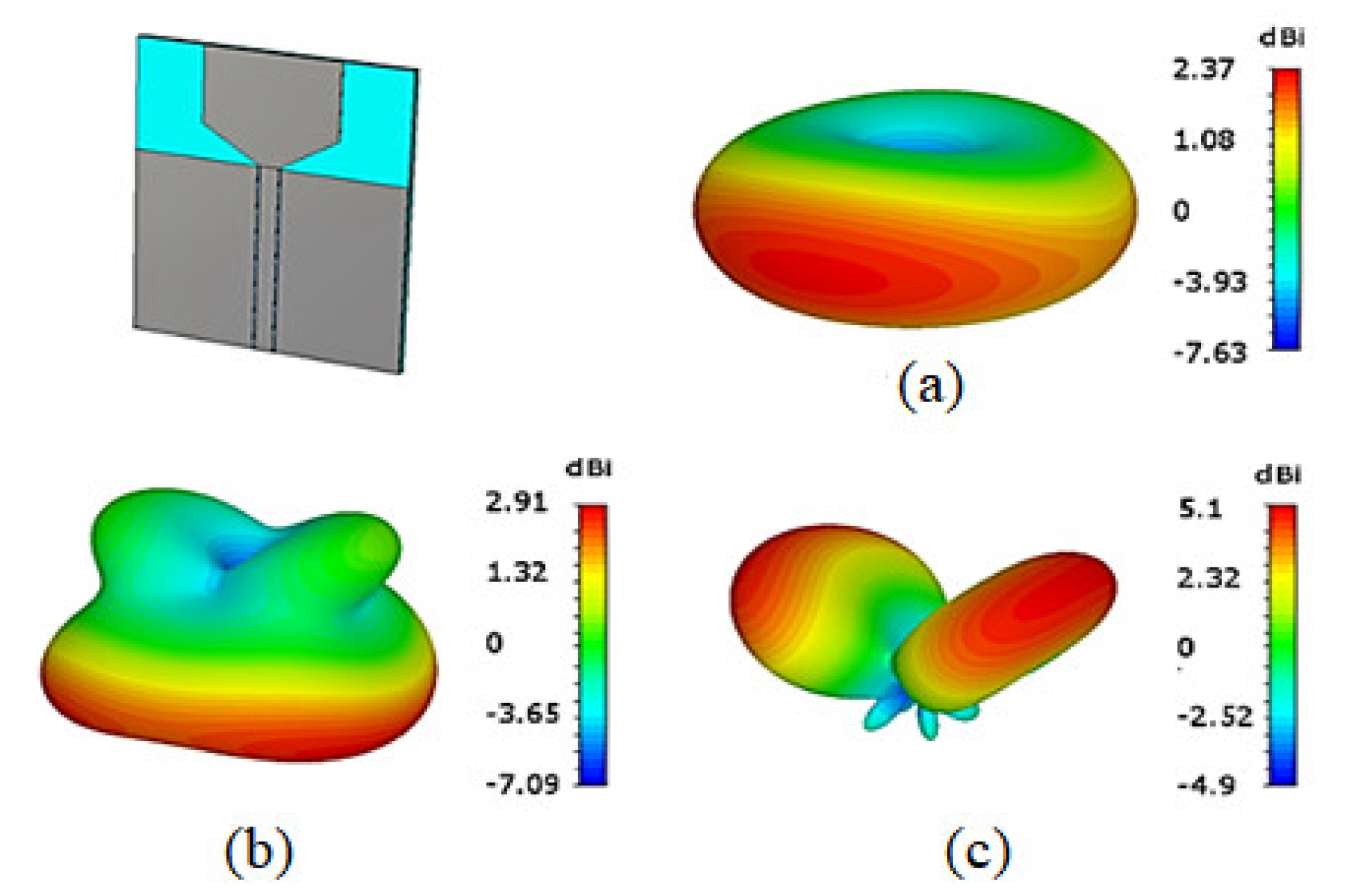
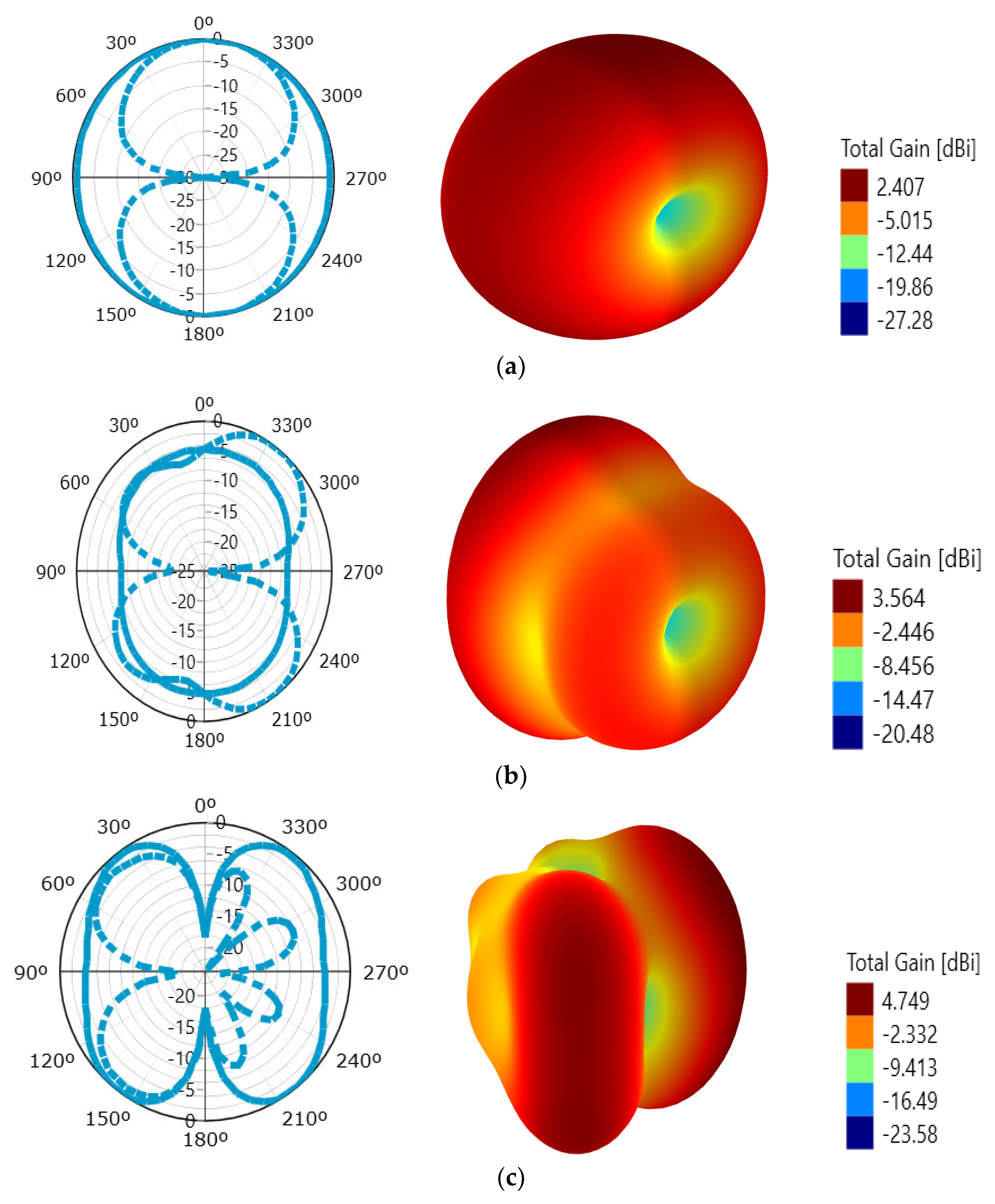
Disclaimer/Publisher’s Note: The statements, opinions and data contained in all publications are solely those of the individual author(s) and contributor(s) and not of MDPI and/or the editor(s). MDPI and/or the editor(s) disclaim responsibility for any injury to people or property resulting from any ideas, methods, instructions or products referred to in the content. |
© 2024 by the authors. Licensee MDPI, Basel, Switzerland. This article is an open access article distributed under the terms and conditions of the Creative Commons Attribution (CC BY) license (https://creativecommons.org/licenses/by/4.0/).
Share and Cite
Babu, G.K.; Aruna, S.; Naik, K.S. Design Implementation of Trapezoidal Notch Band Monopole Antenna for LTE, ISM, Wi-MAX and WLAN Communication Applications. Eng. Proc. 2023, 59, 145. https://doi.org/10.3390/engproc2023059145
Babu GK, Aruna S, Naik KS. Design Implementation of Trapezoidal Notch Band Monopole Antenna for LTE, ISM, Wi-MAX and WLAN Communication Applications. Engineering Proceedings. 2023; 59(1):145. https://doi.org/10.3390/engproc2023059145
Chicago/Turabian StyleBabu, Gubbala Kishore, Singam Aruna, and Kethavathu Srinivasa Naik. 2023. "Design Implementation of Trapezoidal Notch Band Monopole Antenna for LTE, ISM, Wi-MAX and WLAN Communication Applications" Engineering Proceedings 59, no. 1: 145. https://doi.org/10.3390/engproc2023059145




